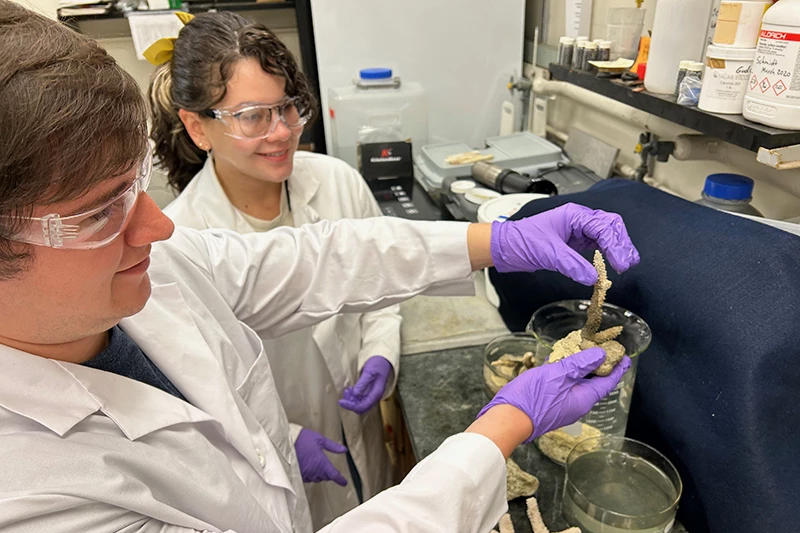Getting glue to stick in dry conditions is relatively easy, but having it maintain a bond underwater is much more difficult. That said, a new bio-based glue not only works underwater, it actually gets stronger when immersed.
The nontoxic adhesive is being developed by Assoc. Prof. Gudrun Schmidt and colleagues at Indiana's Purdue University. It's made mainly of zein – which is a protein extracted from corn – and tannic acid, which is obtained from galls in oak tree bark.
When the glue is sandwiched between two objects which are subsequently placed underwater, a thin skin initially forms on it. That skin can be broken simply by piercing it with a finger or something similarly pokey. The surrounding water is then able to get into the glue, increasing its bond strength. Maximum bonding takes place at a water temperature of about 30 ºC (86 ºF).
Although the exact reason for this reaction is not fully understood, Schmidt states that the tannic acid is mainly responsible for adhesion to the surfaces, and that the acid's molecules have similarities to those in the natural glue which mussels use to cling to rocks underwater.
The whole glueing process is claimed to be not unlike preparing a poached egg.
"When you throw a raw egg in warm water, a visible skin builds around the egg while the inside is still raw," Schmidt tells us. "If the water is warm and not too hot, the skin around the egg is thin and can be broken easily with the tip of a fork […] If you now squeeze the poached egg between two slices of bread, then you have done more or less what we do with a blob of glue sandwiched between two substrates."
The analogy goes even further, in that if the resulting sandwich is heated, the egg will harden and glue the two slices of bread together.
Schmidt adds that the glue is easy to make outside of a laboratory setting, utilizing inexpensive sustainably sourced ingredients. It could ultimately be utilized in applications such as the construction industry, biomedical/dental procedures, or even the restoration of coral reefs.
A paper on the research was recently published in the journal ACS Applied Materials and Interfaces.
Source: Purdue University




